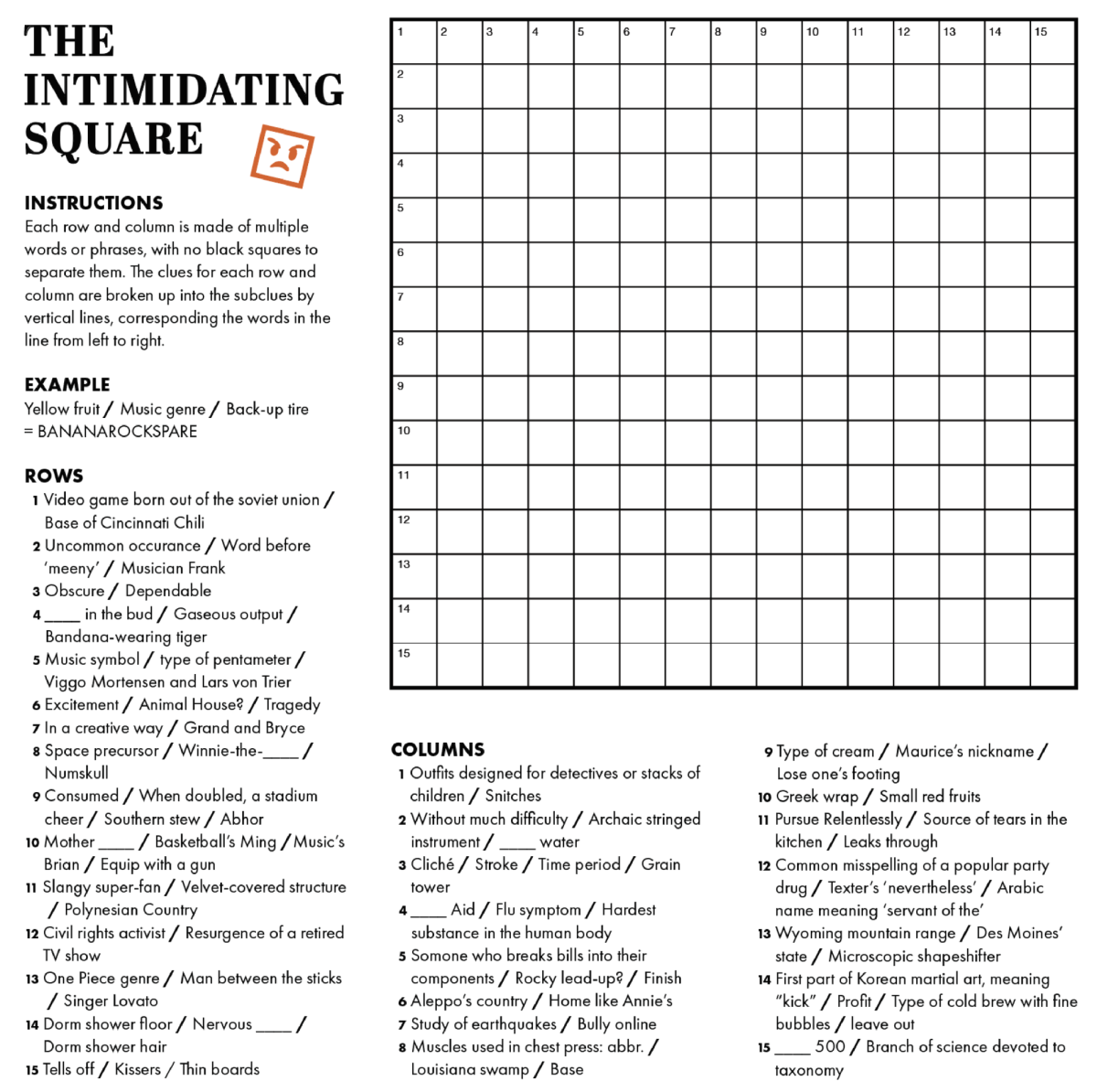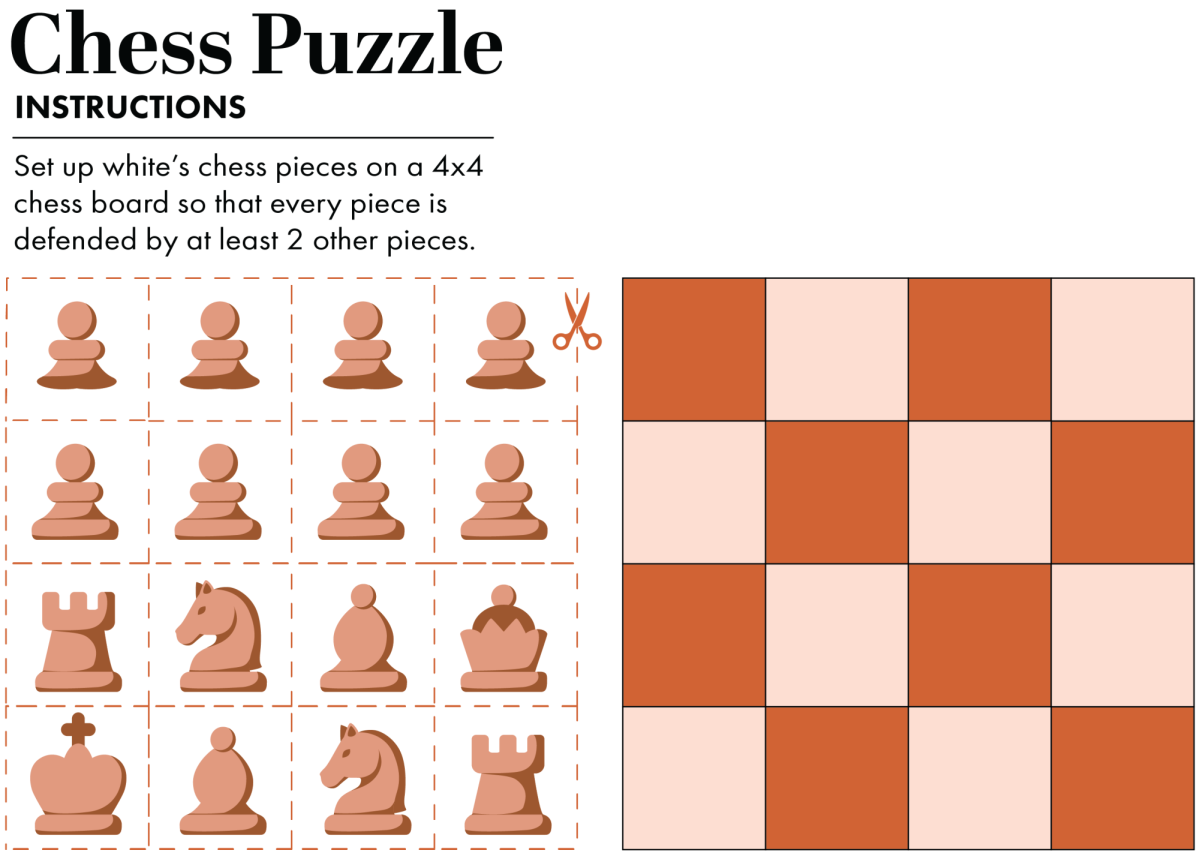Photographer forges ahead despite vandalism
Allison Sakai standing in front of her installation titled “We Looked Like the Enemy”, hung in Snell Hall on June 2, 2023 in Corvallis. After receiving letters written by her grandmother, from her father, Allison quoted, “In my grandma’s writings, she included haikus that my great grandfather, Yempei Wake, wrote while he was incarcerated”.
June 12, 2023
It was not only the blatant racism, but also the politicization of a personal story that upset Allison Sakai when her photography project on her family’s internment was vandalized during winter term.
“It was really sad for me because it made this project turn into something I didn’t want, which was an argument about global politics,” Sakai said.
Sakai flipped through a hand-bound book filled with photos and writings from her relatives to a series of self-portraits. In them, she is blurred or focused, in profile, or staring directly into the camera. White text overlays the black-and-white background: quotes taken from the writings of her grandmother, Alice, who passed away from Alzheimer’s when Sakai was 15.
Sakai is in her fifth year at Oregon State University, double-majoring in graphic design and photography. The film photos are part of her capstone project which is centered around her grandmother’s experience in a Japanese American internment camp.
The project was inspired by a painting class Sakai took last spring term when students were given the prompt “drama and trauma.”
“That’s when I started to realize (that my) grandma was my age when she was sent to camp,” she said.
This realization led Sakai to a document full of her grandmother’s writings which her dad had typed up after her grandmother passed.
“I don’t know where I got my graphic design passion but it wasn’t from my dad,” she said, scrolling through the Word Document, past stock photos of milking cows and shoes interspersed with text.
Reading about the internment from her grandmother’s perspective gave Sakai a chance to see her grandmother’s life outside of her own was “like when you realize when you’re a kid that your mom has a first name.” She did not feel ready to approach the subject of internment in her painting class, and never completed the painting.
A photo portfolio class this winter gave Sakai the opportunity to explore internment through photography, a medium she felt more comfortable with. She chose to take a series of self portraits on large-format film.
“Putting myself in the photos was a way for me to…be really grateful for the life I have that I didn’t have to go through (internment),” she said.
Evan Baden, a photography instructor who has worked with Sakai throughout her time at OSU added that the decision to use self-portraiture overlaid with text made the images particularly powerful because it felt like Sakai was standing there speaking directly to the viewer.
At the end of the term, Sakai and the other portfolio students, displayed their projects in Snell Hall to be viewed and graded by their professor, Julia Bradshaw. Sakai left her photos up a while longer to show Associate Professor of Photography Kerry Skarbakka, who she wanted to continue the project with. It was during this time that the vandalism occurred:
“I came back [to Snell] to go to class one day and all of these things were pinned underneath my photos and [they] were just kind of defending the internment camps and they [had] highlighted sections [about] Japanese spies and over-explaining the war side of it,” Sakai said, “It scared me…because they are photos of my face…and no one knew who it was. So I [wondered] are they going to stop at just this? Are they going to confront me?”
Since the initial incident, no additional information about the identity of the perpetrator(s) has come to light.
Skarbakka, who is now mentoring Sakai, noted that the vandalism incident does speak to the importance of Sakais’ project:
“I think when you get people that are willing to actually take extra steps to voice their dissent or opinion about an art project, you’ve hit a nerve,” said Skarbakka. “You’ve done what the project was supposed to do.”
Sakai echoed this sentiment, saying that although the vandalism was upsetting it also gave her greater incentive to continue the conversation about the racism that led to Japanese American internment in her capstone project.
“I was scared that it (the project) turned into a conversation that wasn’t my intent,” she said. “This was never about politics. It’s never been about the war, that was an event that influenced this obviously, but it’s much more about the racism that happened. This was solely based on race.”
The new installation going in this week will showcase multiple aspects of the internment, from the black tarp “walls” inside the barracks, to the name tags that assigned each internee a number.
Sakai reached into her backpack and pulled out a sheaf of name tags. Each one has a name hand-written in uppercase and a hand-stamped number in red. She said she was up until 3:30 a.m. writing out names and stamping numbers. She intends to make 500 tags for the art installation, all based on the ones actually assigned to people who were interned with her grandparents in Poston, Arizona.
Sakai said that, although it is emotionally challenging, filling out the tags by hand is an important part of her process. She is also considering getting other students to help with the rest of the tags.
“It’s really sad, but I think, also, that (it’s) good for other people to start…doing that process,” Sakai said. “What does it feel like to write someone’s name and then give them a number?”
She is also building a barrack out of pieces of lumber and black plastic and a mattress that visitors to the installation can stuff with straw: one of the first things internees had to do upon arriving at a camp.
Sakai hopes to extend the project beyond her last few weeks at OSU, perhaps even traveling to document the stories of other internees. She also intends to make more name tags.
“There’s so many to do and so I am probably just going to make them until I physically cannot anymore,” Sakai said. “It’s not a hard thing to do, it’s just a heavy thing to do.”

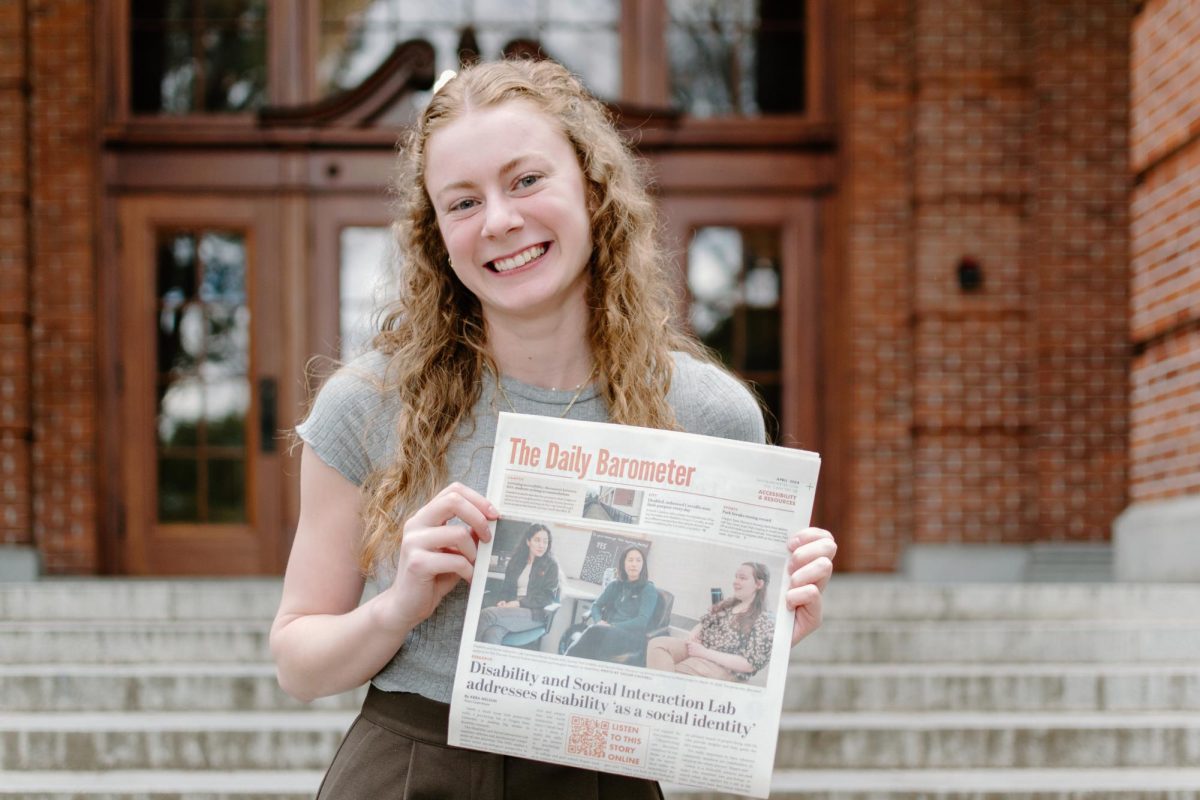

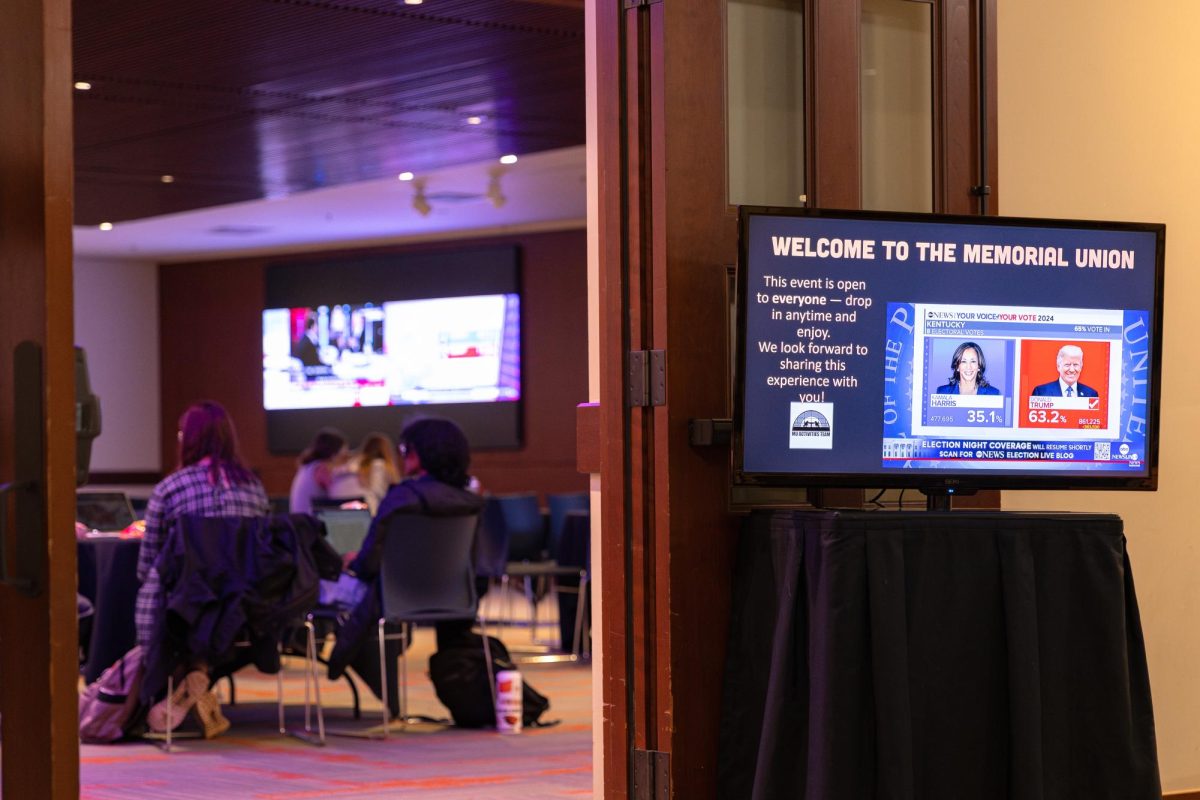


















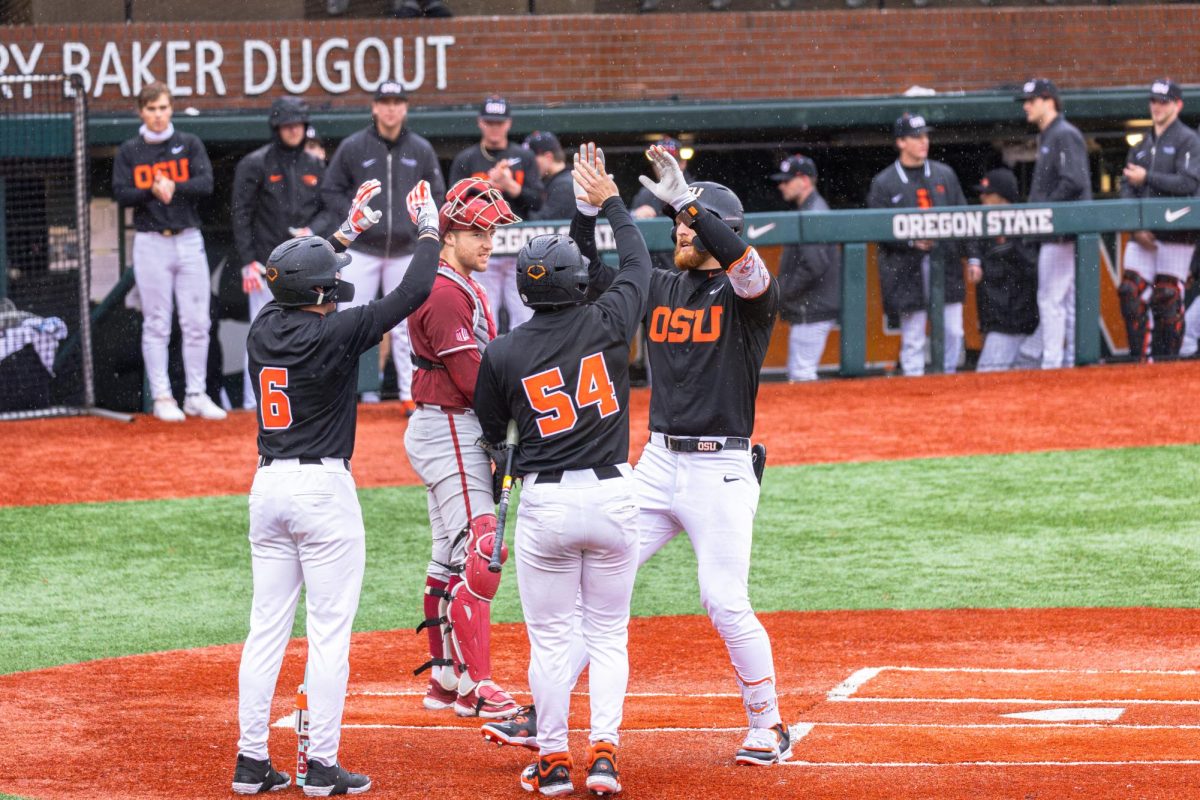




















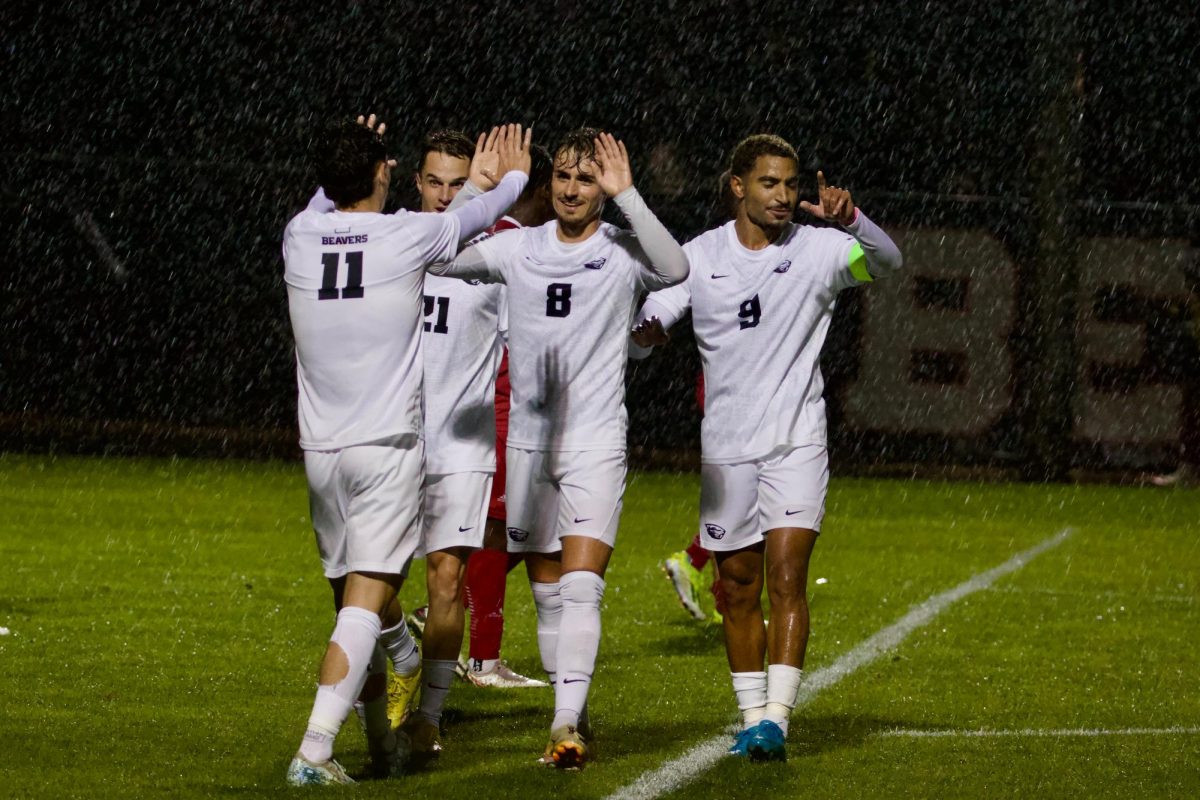



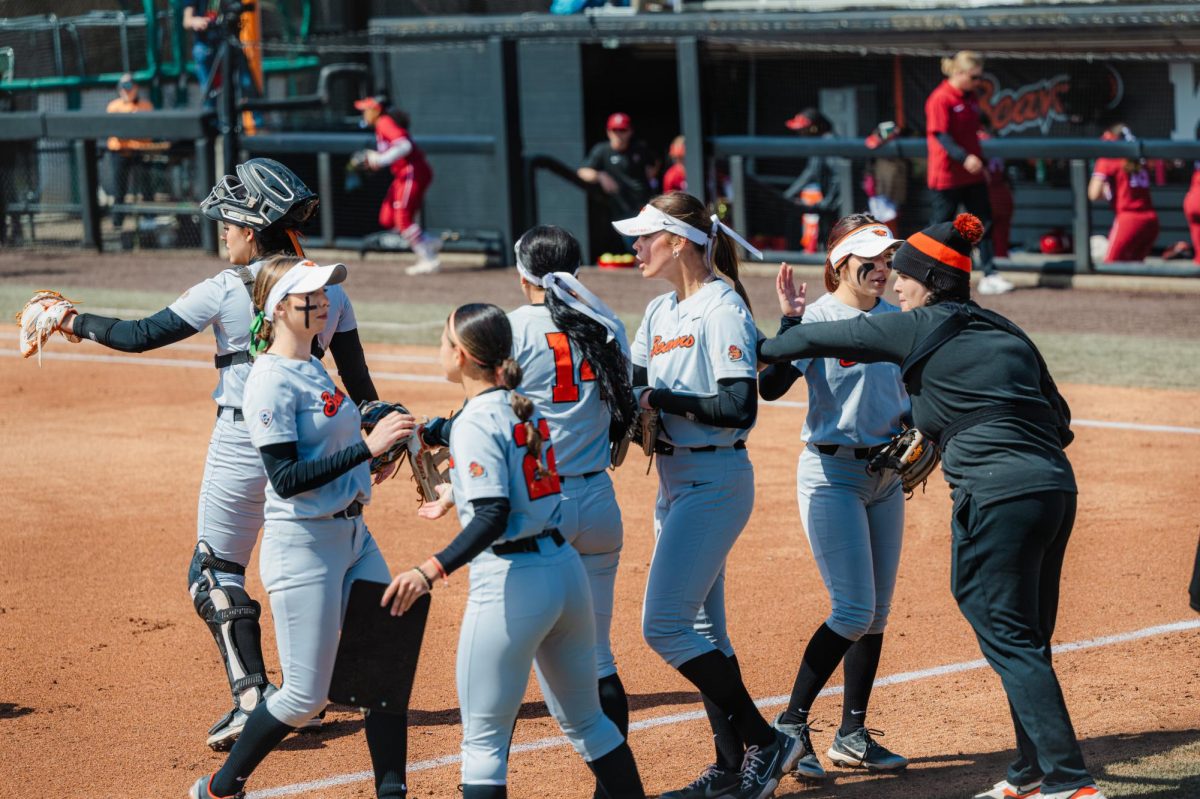

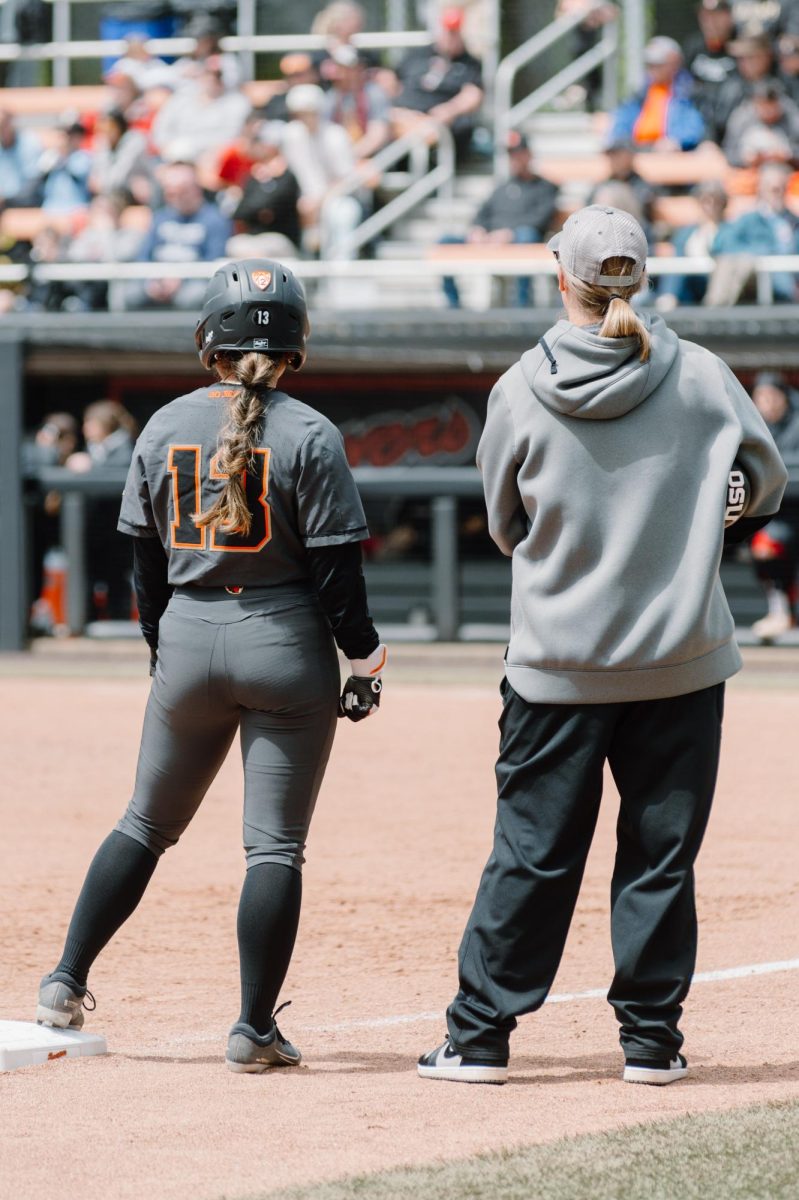
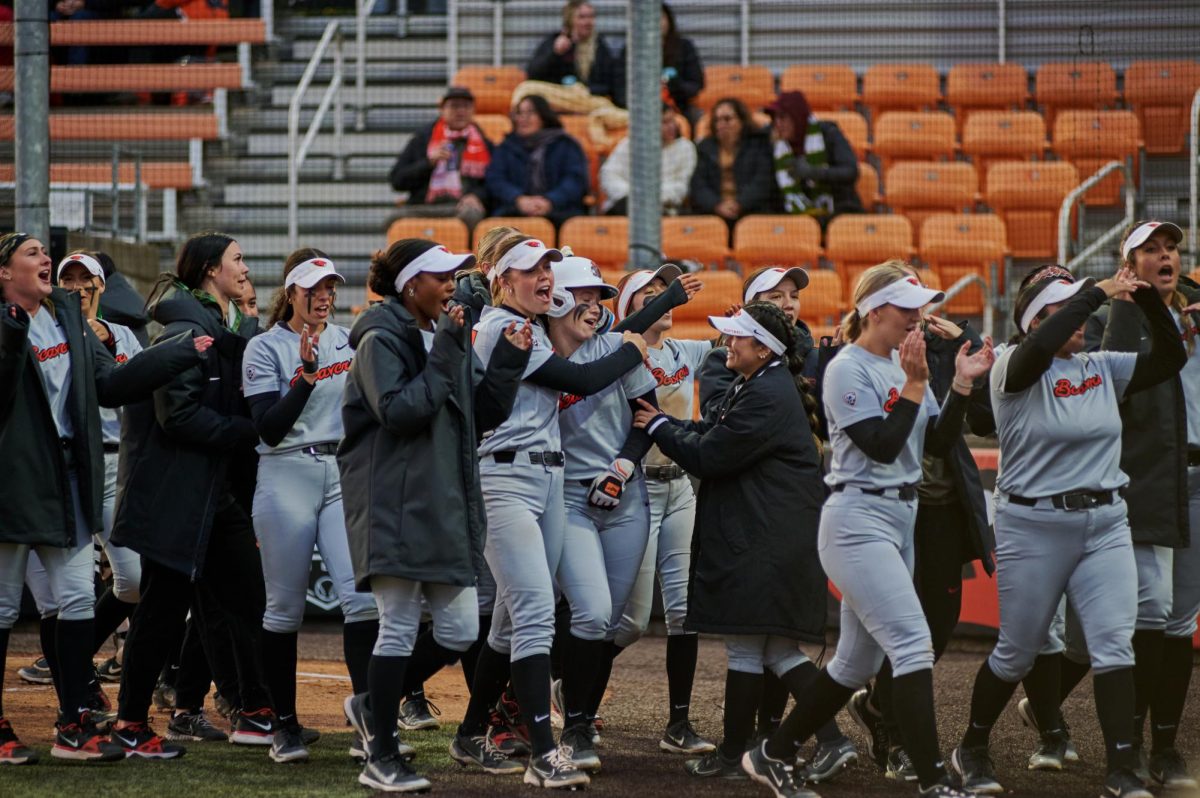



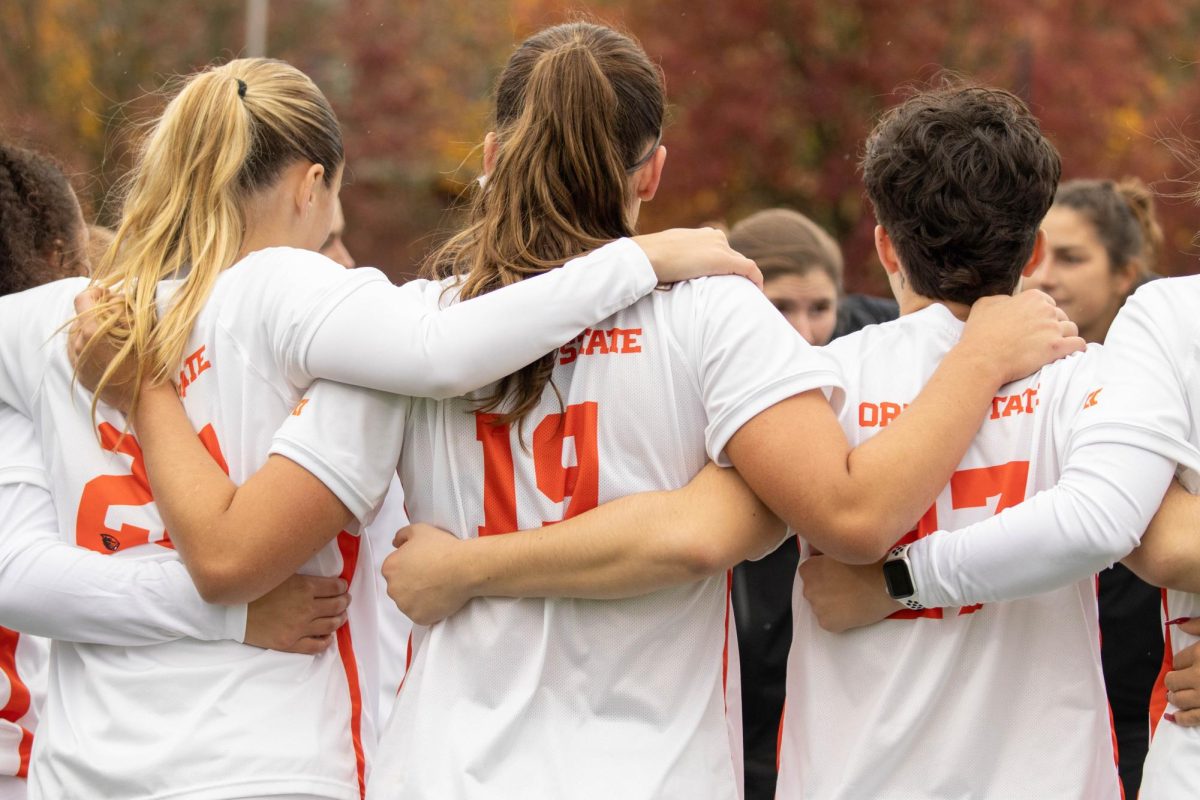




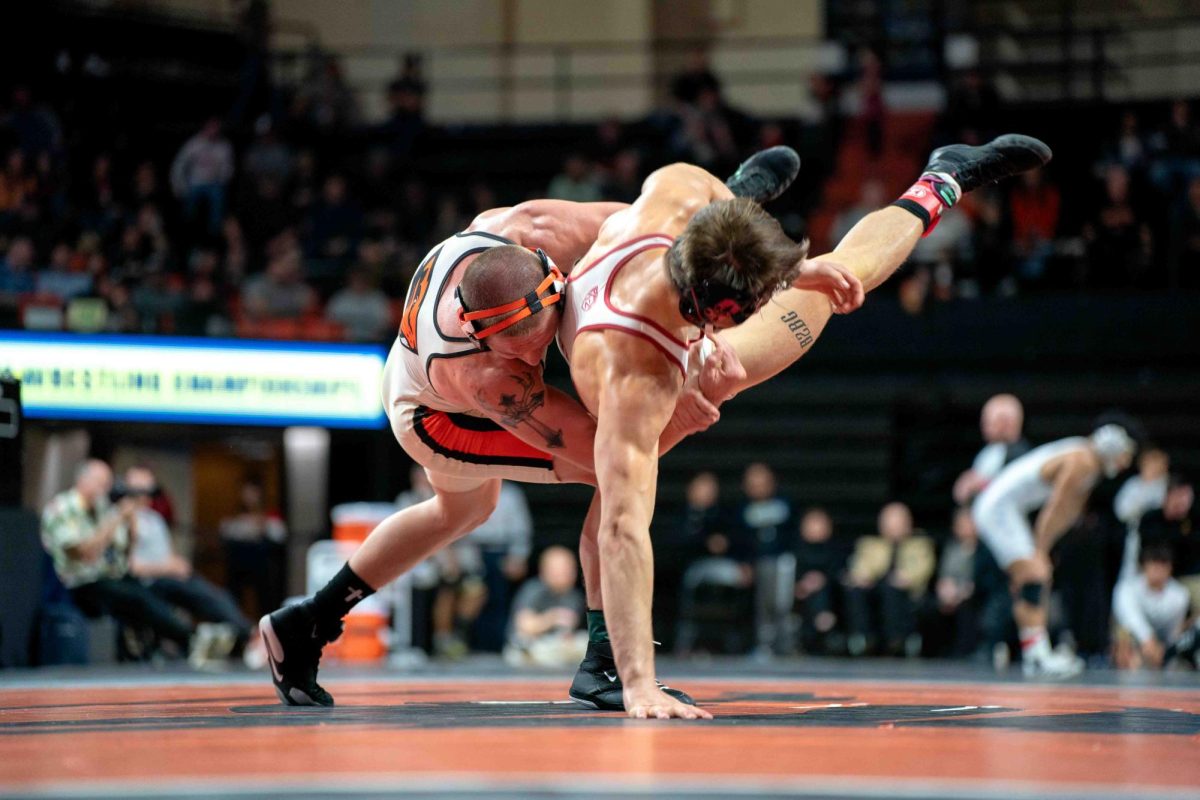











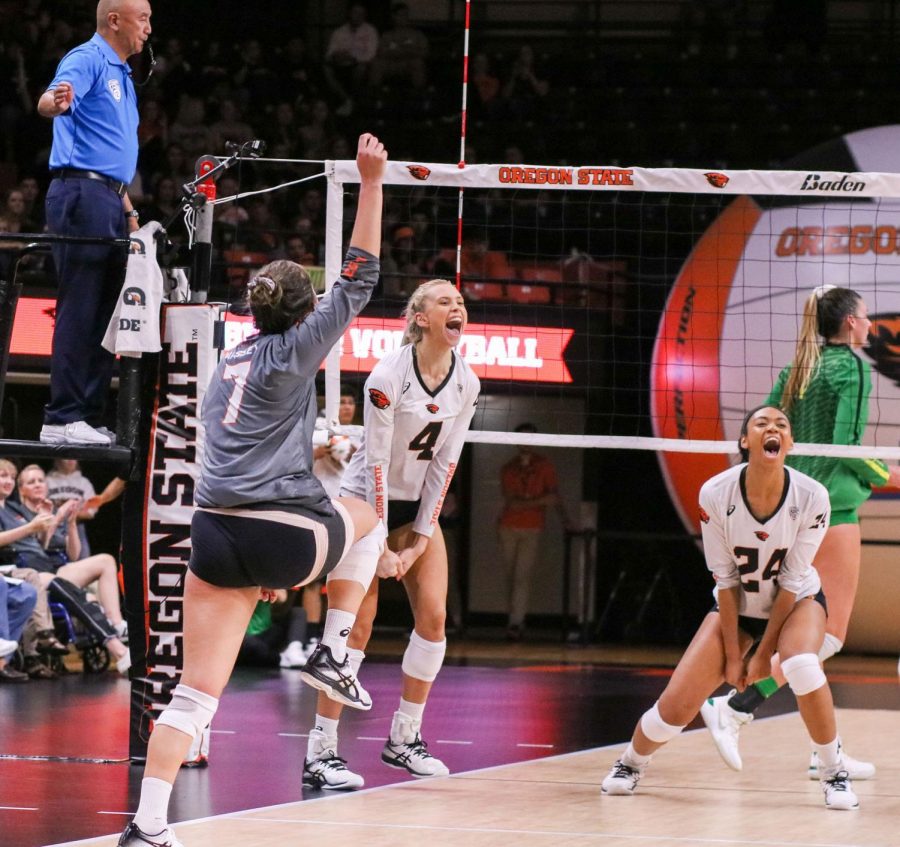


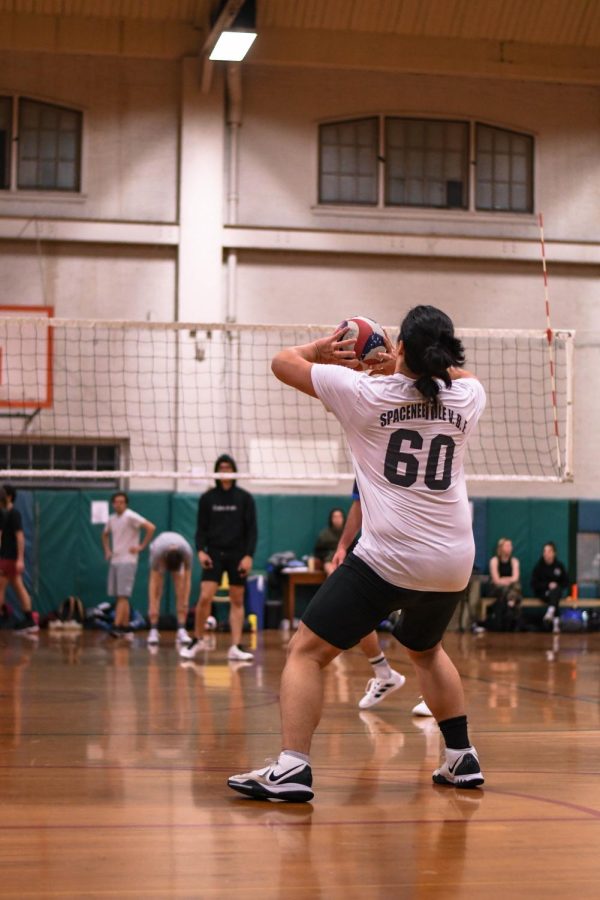







![Newspaper clipping from February 25, 1970 in the Daily Barometer showing an article written by Bob Allen, past Barometer Editor. This article was written to spotlight both the student body’s lack of participation with student government at the time in conjunction with their class representatives response. [It’s important to note ASOSU was not structured identically to today’s standards, likely having a president on behalf of each class work together as one entity as opposed to one president representing all classes.]](https://dailybaro.orangemedianetwork.com/wp-content/uploads/2025/03/Screenshot-2025-03-12-1.00.42-PM-e1741811160853.png)




















